A birthday tribute to the writer who gave us 007…
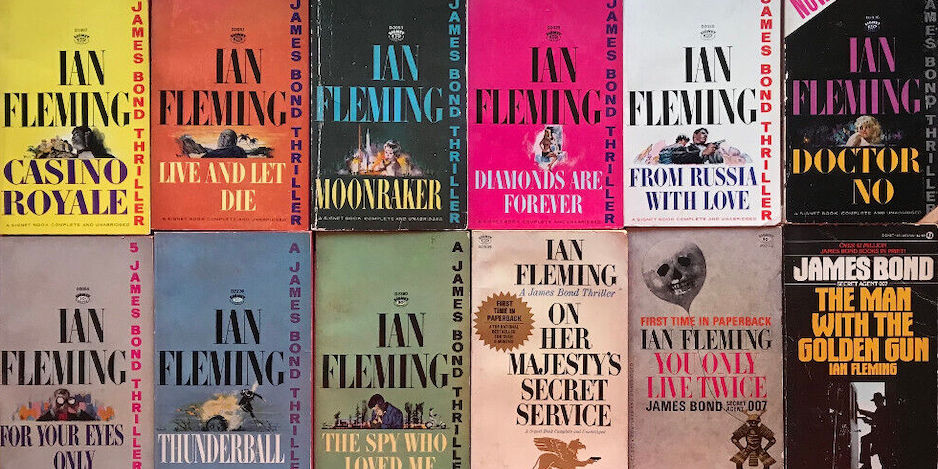
—
UPDATED 5/28/24: The late, great Ian Fleming was born 116 years ago! Perfect time to reprint this 2023 tribute by Jim Beard! Dig it. — Dan
—
By JIM BEARD
I was born right smack-dab in the middle of the famed “three Bs” of the 1960s: Batman, the Beatles, and, of course, James Bond. Lucky for me, my dad was a big fan of all three, because I picked up those three torches and ran with them.
People who know me have heard me talk excessively about Batman and the Beatles, but I’ve never pontificated much on Bond. On the occasion of his creator Ian Fleming’s birthday — he was born 116 years ago on May 28, 1908 — I’d like to rectify that right here and now.
The original James Bond novels are the very height of spy fiction for me, delicious in their construction and filling in the satisfaction they leave you with. I love everything about them, even all the stuff—machismo, misogyny, meal planning—that others hold up as everything that’s wrong with them. I don’t support those things IRL (OK, maybe the meal planning), but I can’t imagine the Bond books without them. The novels are such a sign of their times, a window into a bygone mindset that can be illuminating and interesting if you just let them be.
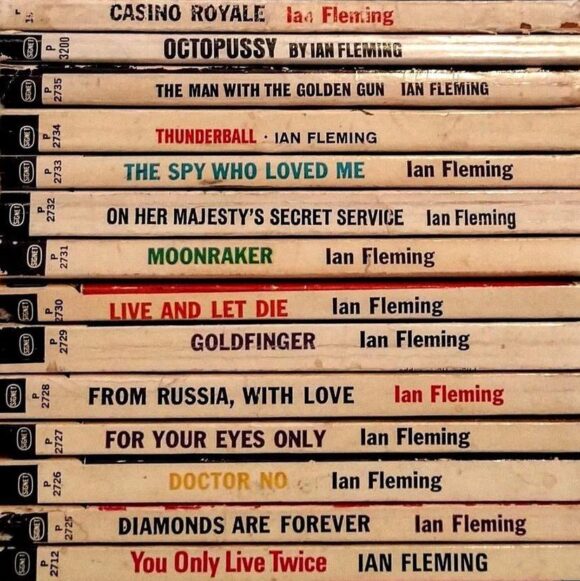
I wish more fans of the films would go back to the source material. They can both be enjoyed on their own merits and as their own things. The James Bond of the books is the progenitor of the guy in the films—and there is still a connection between them that when seen and identified can make both worlds richer.
Anyway, here’s my look into Ian Fleming’s world. In order to fit into 13th Dimension’s schtick, I’m limiting my observations to the first 13 books of the original 14, which means poor little Octopussy and The Living Daylights will just have to wait for some other time.
—
Bond Gives It Up (Casino Royale, 1953). We’ve seen it in the films more than once, but the fascinating thing about Bond’s resignation from the Secret Service here is that it happens in the first novel, at the very beginning of his literary career. Beyond that, the book also sets in motion an incredible long-term character arc of self-destruction that permeates the canon.

—
Bond Pays With an Arm and a Leg (Live and Let Die, 1954). It’s not easy being Bond’s friend and ally in the novels. NATO and CIA operative Felix Leiter loses an arm and a leg to a great white shark for being 007’s backup, but he survives to reappear later as a Pinkerton man with prosthetics. Oh, how I wish someone had written a series of Leiter solo novels.
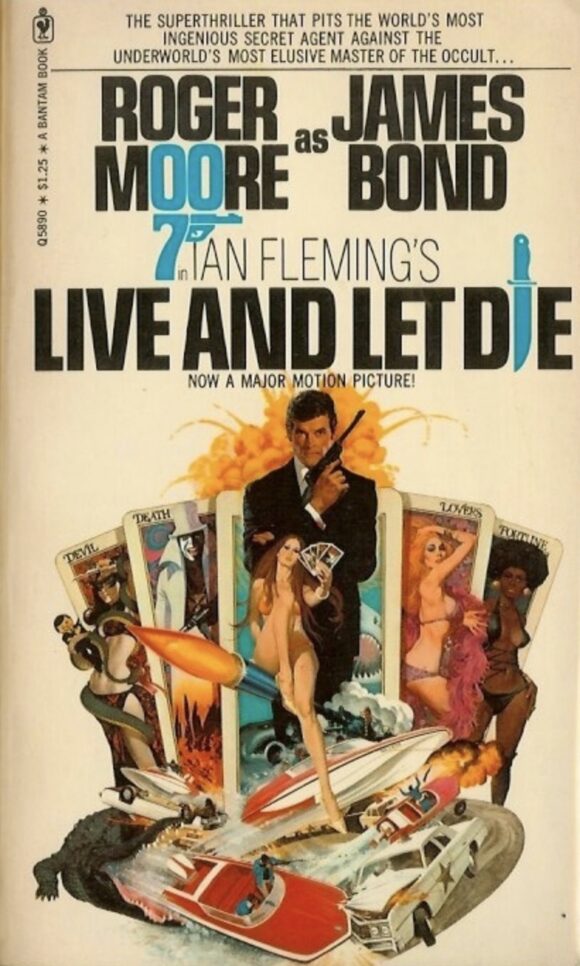
—
Bond Doesn’t Get the Girl (Moonraker, 1955). Policewoman Gala Brand proves to be a capable and cunning partner for Bond in his struggle with Hugo Drax, and while they go through hell together, in the end our hero fails to bed the heroine—she’s engaged to someone else, you see.
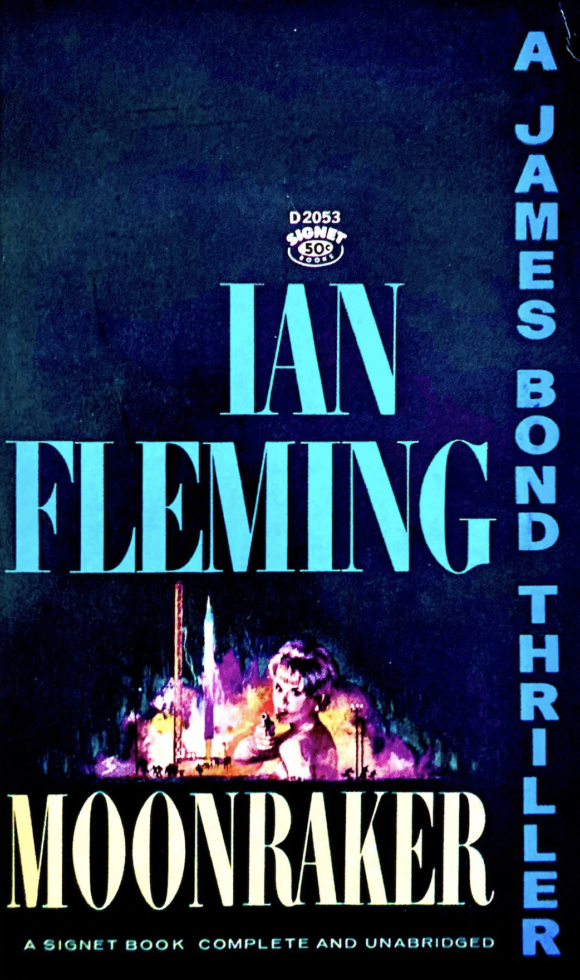
—
Bond Battles a Couple of Kooks (Diamonds are Forever, 1956). It’s fascinating to me the impact the allegedly homosexual, yet decidedly sadistic, couple of crooks named Wint and Kidd have had beyond their debut in the novel. From what I understand, after their appearance in the film, versions of them have appeared in the animated Static Shock and Teenage Mutant Ninja Turtles, and there’s even a London jewelry shop named for them!
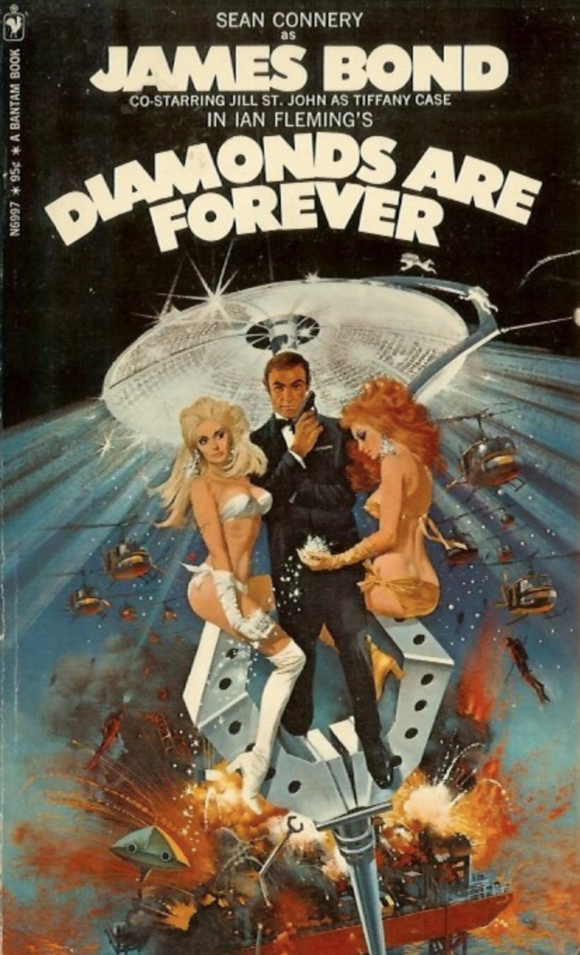
—
Bond Is Marked for Death (From Russia with Love, 1957). Five novels into the series and Fleming, like Sir Arthur Conan Doyle before him, was already tired of his popular character and plotted and penned his demise. James wasn’t supposed to come back after being poisoned in the novel, but a cooler head prevailed, and Bond’s fans got several more adventures out of him.
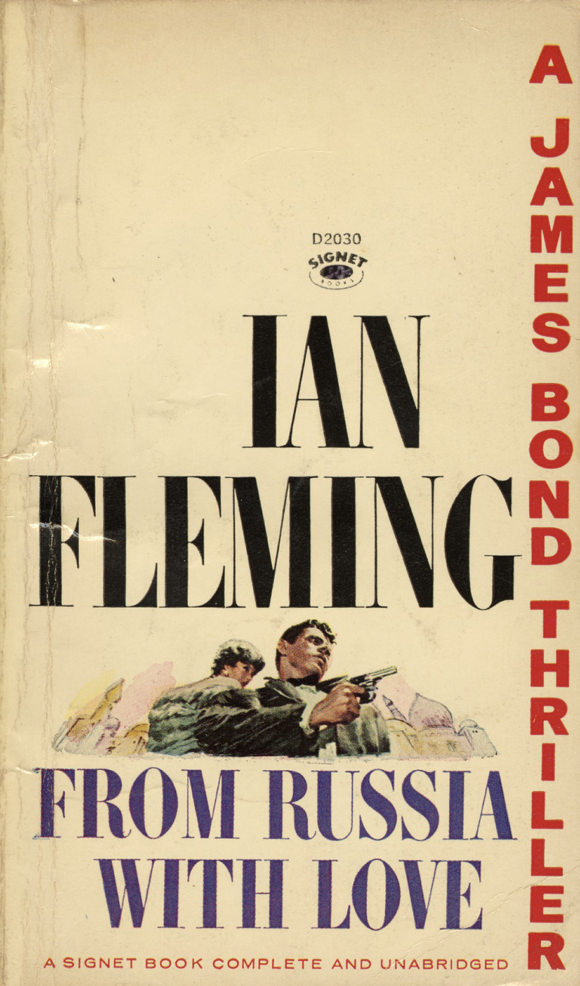
—
Bond Clobbers a Kaiju (Doctor No, 1958). In an incredible event that even the film version didn’t dare attempt, 007 goes up against a giant squid in the evil doctor’s lair, just like Saint George and that pesky dragon of legend. You gotta read it to believe it, folks.
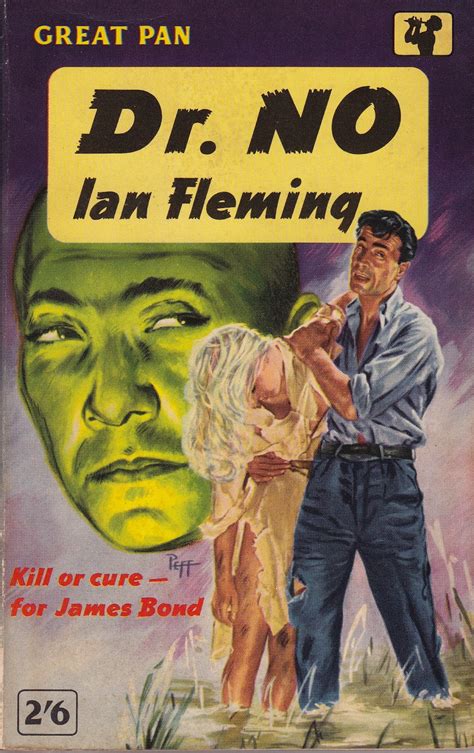
—
Bond’s Storyteller Is Sued (Goldfinger, 1959). I personally wouldn’t have figured a name like “Goldfinger” would be anything but made up for the novel, but the truth of it is the real person Fleming took it from, Ernō Goldfinger, declared his intention to sue the author for the use. Fleming counter-threatened to change the character’s name to “Goldprick,” but the whole mess was thankfully handled out of court.

—
Bond’s Gal Takes Care of Business (For Your Eyes Only, 1960). In a nice twist to the Bond legend, it’s Judy Havelock who has her revenge in the short story “For Your Eyes Only” and kills the big baddie—not Bond.
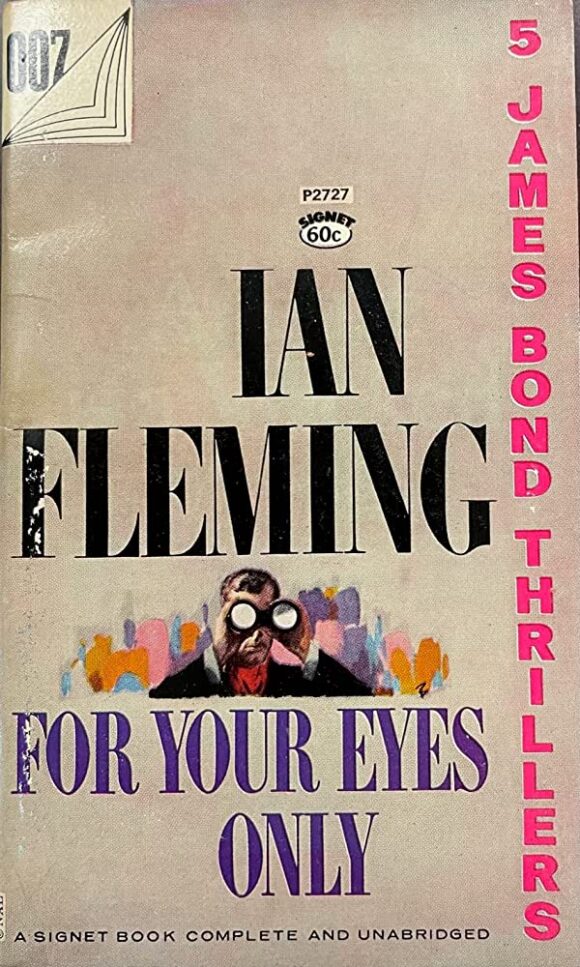
—
Bond’s Bound for Bedrest (Thunderball, 1961). In the novels, 007’s not always the suave, dashing hero of the films. In fact, by this point he’s in such bad health from drinking, smoking, and running himself ragged that his boss M orders him to a health spa… which matches up with his creator’s own flagging health at the time.
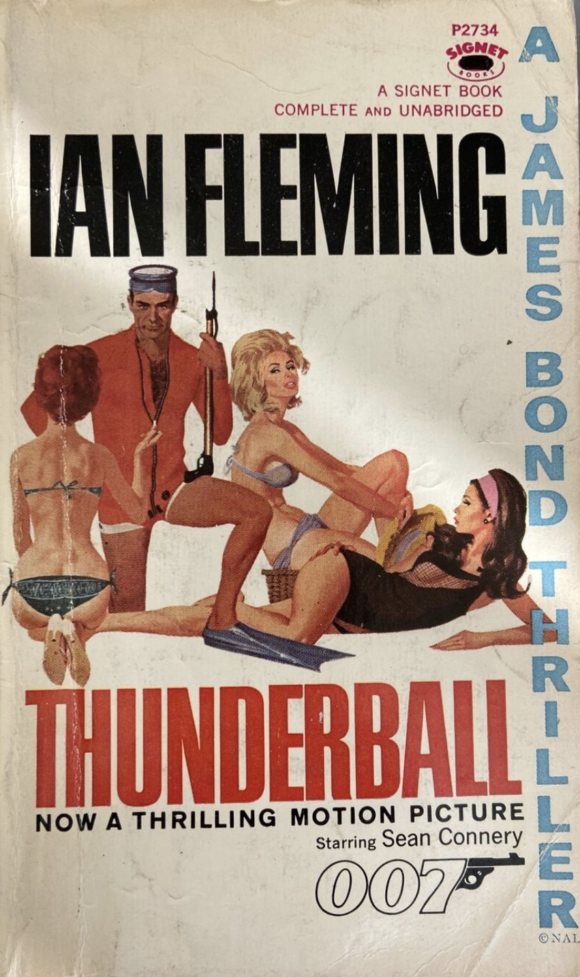
—
Bond Takes a Backseat in His Own Book (The Spy Who Loved Me, 1962). I want to state here that I’m an unapologetic fan of the novel, more so than its own author. The fascinating thing here is that our hero doesn’t show up in the narrative until about two-thirds of the way in.
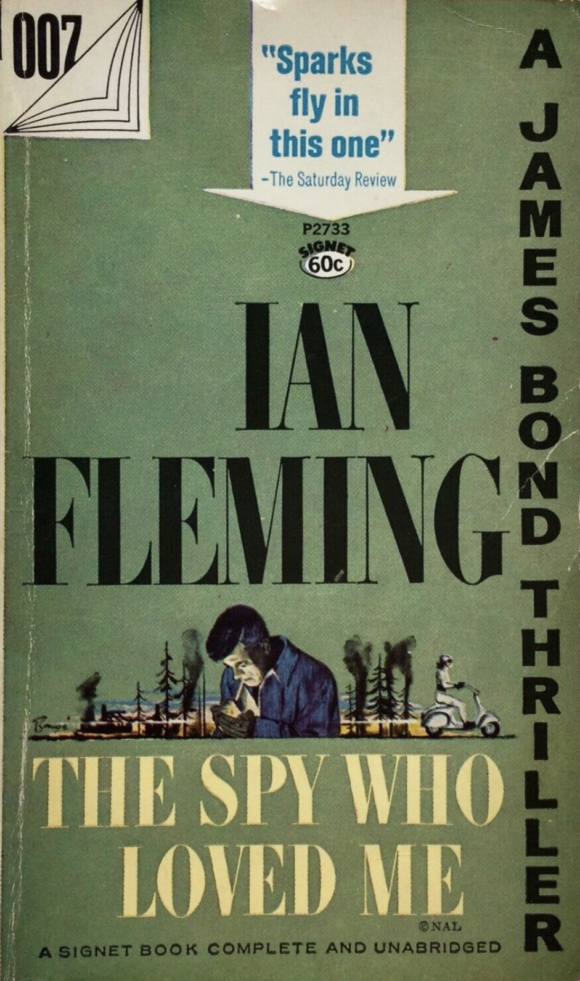
—
Bond Says “I Do” (On Her Majesty’s Secret Service, 1963). Here, in one of my most favorite of the Fleming Bonds, James actually, really gets married… for a few hours. The book is also the second part of what is sometimes called the “Blofeld Trilogy,” a series within the series.
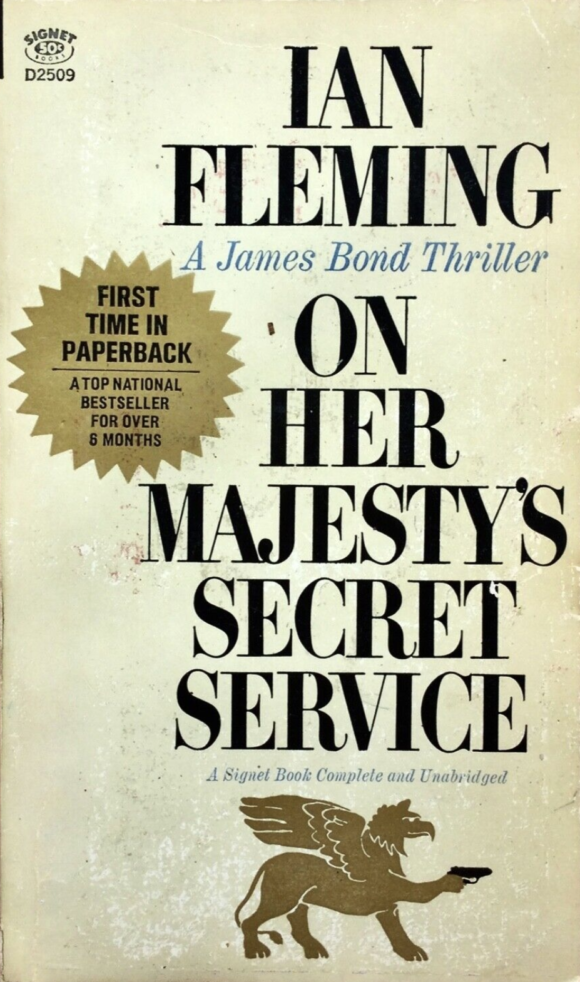
—
Bond’s on the Chopping Block (You Only Live Twice, 1964). By this book in the canon, M’s so fed up with his top agent he’s ready to serve him his pink slip and be done with him. It’s a fascinating moment in the overall story, because Bond’s run himself into the ground after the events of the previous book, but his boss decides there may yet be another adventure in him.
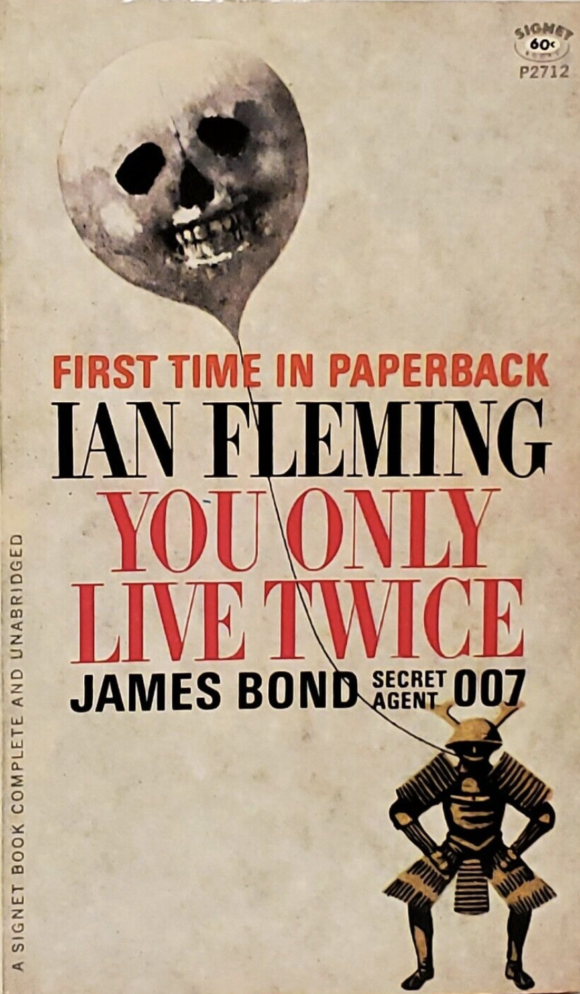
—
Bond Attempts Bossicide (The Man with the Golden Gun, 1965). Bond ends where I begin, in 1965. He also was brainwashed here by the Russkies to assassinate his own superior, M. It’s a great setup in an otherwise tepid final James Bond novel, but I cut it some slack—Fleming died after only completing a first draft.
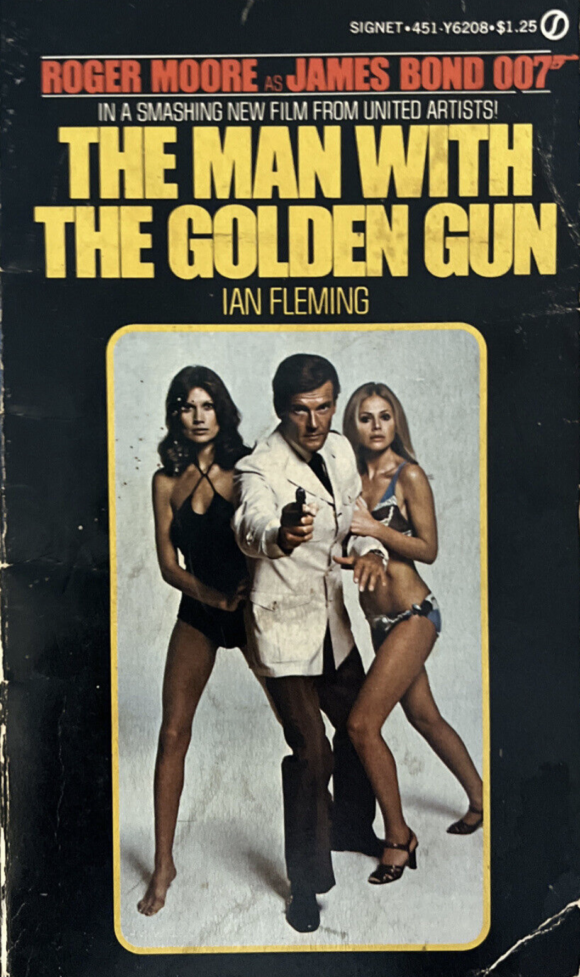
—
MORE
— 60 YEARS OF JAMES BOND: 13 Great Things Introduced in DR. NO. Click here.
— 13 Things You Might Not Know About the JAMES BOND Franchise. Click here.
—
When JIM BEARD’s not editing and publishing through his two houses, Flinch Books and Becky Books, he’s pounding out adventure fiction with both original and licensed characters. In fact, he’s put words in the mouths of Luke Skywalker, Superman, Fox Mulder, Carl Kolchak, Peter Venkman and the Green Hornet… and lived to tell about it. His latest pop culture non-fiction tome is D20 or Die!, available here.
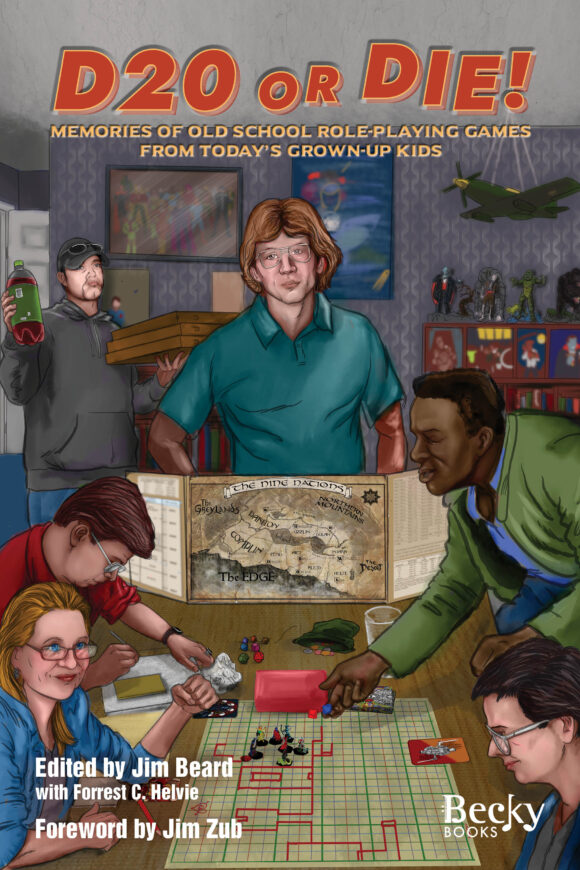

May 28, 2023
Happy birthday to the creator of the “James Bond 007” franchise.
May 28, 2023
Jim, fun trip with today’s read. I have most of those (somewhere) having read them during my high school years. But what did you mean when you said, “…. I’m limiting my observations to the first 13 books of the original 14, which means poor little Octopussy and The Living Daylights will just have to wait for some other time.”? “Living Daylights” would make it 15. Gotta be something there.
May 28, 2023
That’s one book: “Octopussy and the Living Daylights.”
May 29, 2023
Ah, I just read that and saw the two movies in my head. Thanks for clearing that up.
May 28, 2023
This is an excellent piece. I’ve read the Bond novels a couple of times each and I am constantly in pursuit of clean Signet copies. They pop up occassionally at Half Price books. The earlier Pan and the film cover additions are also enticing.
May 28, 2023
I’m sorry: “editions”
May 28, 2023
Thanks, Rick! It was a real joy for me to do.
May 28, 2023
Minor boo-boo: “Thunderball” begins the Blofeld Trilogy, not “OHMSS”. Other than that, spot on! It occurs to me that redoing the film series as a series of period pieces (1953-65) following the books’ original themes would be fun! 🙂
May 28, 2023
Thanks. We corrected it. I was focusing too much on TMWTGG as a continuation of YOLT and got my trilogy mixed up.
May 28, 2023
I listened to the spy who loved me, read by a female, and wow, what a twist. And Bond does arrive late in the story, but what a finish. One of my favorites…
The order of the books is significantly different from the movies too. These are great reads…
May 28, 2023
TSWLM is also one of my favorites. Criminally dismissed by the purists.
May 28, 2023
I am glad to read Ian Fleming when I was twelve y.o I was born in Philadelphia it gave me a idea there was a world I did discover, like I when to London , Paris and the Bahamas , and will travel more in the future , now I am 72 planning to travel to go to Japan or South America, I have to thank Ian Fleming to open that door to know the world has been a open door, I even learn to dress and play game of chance .
May 29, 2023
Love it! I was around for Bondmania in the 60s. And I’ll add a forth “B” to the mix: “Brown…Charlie Brown.”